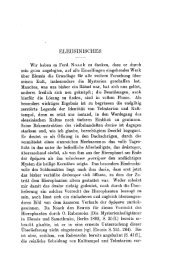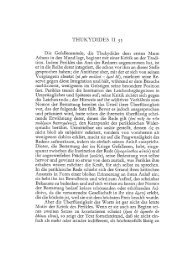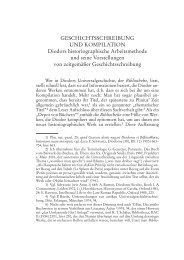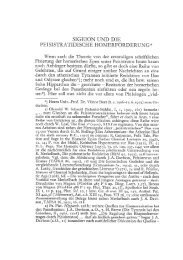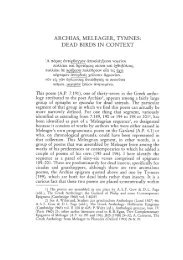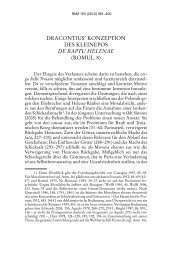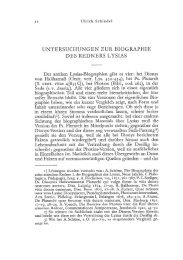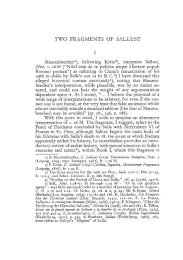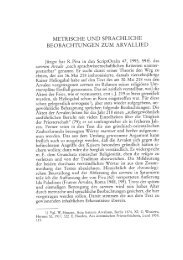VIRGILIO E STESICORO Una ricerca sulla Tabula Iliaca Capitolina *
VIRGILIO E STESICORO Una ricerca sulla Tabula Iliaca Capitolina *
VIRGILIO E STESICORO Una ricerca sulla Tabula Iliaca Capitolina *
Sie wollen auch ein ePaper? Erhöhen Sie die Reichweite Ihrer Titel.
YUMPU macht aus Druck-PDFs automatisch weboptimierte ePaper, die Google liebt.
182 David Wardle<br />
individual words and phrases which comprise the decree, on the<br />
basis of this (ii) to propose a translation and finally (iii) to discuss<br />
the probable context and significance of the edict.<br />
I. Commentary<br />
Ita. Ita leading onto an ut clause for the purposes of asseveration<br />
– of the contents of the ut clause rather than strict result –<br />
is a feature of Roman prayers often with ita me di ament, ut ... (e.g.<br />
Plaut. Bacch. 892, Merc. 762). 3<br />
Mihi. The use of the first person is appropriate to an edict,<br />
that is a pronouncement based on magisterial authority on a question<br />
considered within his competence: the magistrate or emperor<br />
spoke in the first person. 4 The addressees are unspecified, but can<br />
be understood as all those under Augustus’ authority: in the context<br />
that may mean all citizens of the empire, 5 or more likely a<br />
limited group, for example, the inhabitants of Rome. Although<br />
edicts in principle had no specific addressee, before the tetrarchic<br />
period there is little evidence of imperial edicts as a means of general<br />
communication to the empire rather than as responses to specific<br />
communities, individuals or requests. 6<br />
While mihi and the tense of liceat may indicate that Suetonius<br />
is providing us with a quotation in oratio recta consistent with an<br />
Kaiserbiographien, Bonn 1984, 135 and O. Wittstock, Sueton. Kaiserbiographien,<br />
Berlin 1993, 498. Much basic groundwork was done by W. Weber, Princeps: Studien<br />
zur Geschichte des Augustus, Stuttgart/Berlin 1936, 27 nn. 134–7, but now all treatments<br />
must deal with K. M. Girardet, Das Edikt des Imperator Caesar in Suetons Augustusvita<br />
28,2. Politisches Programm und Publikationszeit, ZPE 131, 2000, 231–43.<br />
3) See the collection of examples by G. Appel, De Romanorum precationibus,<br />
Gießen 1909, 177–8; Girardet (above, n. 2) 234: “einer emphatischen Bekräftigungsformel”.<br />
4) M. Benner, The Emperor Says: Studies in the Rhetorical Style in Edicts<br />
of the Early Empire, Gothenburg 1975, 26. Cf. M. Kaser, Zum Ediktsstil, in: H. Niedermeyer<br />
and W. Flume (edd.), Festschrift für Fritz Schulz, Weimar 1951, vol. ii,<br />
51–2.<br />
5) Cf. A. von Premerstein, Vom Werden und Wesen des Prinzipats, München<br />
1937, 124: “einem Edikt an die Bürgerschaft”.<br />
6) See F. G. B. Millar, The Emperor in the Roman World, London 1977, 252–<br />
9. However, Jos. AJ 19.291 and P. Fayum 20 preserve provisions for empire wide display,<br />
and other Augustan edicts preserved via literary texts (Plin. Ep. 10.83, Macrob.<br />
Sat. 1.10.23) relate to subject matter that would have an empire wide relevance.



